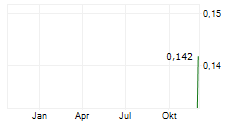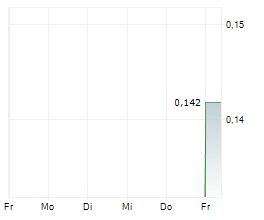Key Highlights
- Winter 2026 Drill Program planned to test two major alteration systems at the Hook Project.
- Multiple Radioactive Systems Identified that display extensive hydrothermal clay alteration, a key indicator of uranium-bearing systems.
- Elevated Radioactivity and Uranium Values within alteration systems highlight strong fertility across multiple zones kilometres from Geiger's ACKIO discovery.
- High Discovery Potential: Alteration styles are analogous to those of major Athabasca Basin deposits, such as the Millennium deposit, suggesting a fertile uranium system.
- Year-Round Discovery Momentum: Hook's winter campaign complements Geiger's summer exploration at Aberdeen, ensuring continuous advancement across two Tier-1 uranium districts.
- Preliminary updates on the Aberdeen Project's summer drilling results will be released shortly.
Toronto, Ontario--(Newsfile Corp. - November 3, 2025) - Geiger Energy Corp. (TSXV: BEEP) (OTCQB: BSENF) ("Geiger") or the ("Company") is pleased to announce its plans to drill on the Hook project ("Hook") this upcoming winter to test two clay alteration systems intersected in 2024, in the Athabasca Basin of northern Saskatchewan (Figure 1).
"The clay alteration and elevated radioactivity at Hook are highly encouraging and warrant immediate follow-up. With proven fertility through the ACKIO discovery, the project clearly has potential for additional uranium mineralization.
"Geiger stands out with its large exploration land packages in two of Canada's most fertile uranium districts, the Athabasca and Thelon basins. The upcoming winter drill program at Hook builds on earlier success and complements the planned summer program at the Aberdeen Project in the Thelon Basin. This strategy enables Geiger to explore and deliver results year-round, creating continuous news flow and discovery potential across two premier uranium districts," stated Rebecca Hunter, President and Chief Executive Officer of Geiger.
Hook Project (Athabasca Basin)
Two main areas that warrant current follow-up on the Hook Project (Figure 2):
- TT area (~5.5 km SW of ACKIO): Drill intersections with clay alteration ranging from 30 to 145 metres in thickness in 5 drill holes, HK24-016, HK24-017, HK24-021, HK24-022 and HK24-023 (Figure 3)
- Extensive, strong clay alteration (Figure 4)
- Prospective upper liesegang limonite banding present and quartz stockwork
- Radioactivity: Up to 300 cps; U ppm values up to 98.4 ppm footwall to the alteration system in pegmatite (Table 1)
- Pathfinders: Elevated boron in altered intervals (e.g. 183.9 ppm B over 126.3 m at 183.1 m in HK24-017) (Table 1)
- TAB area (~6 km NE of ACKIO): Drill intersections of strong fracturing and hydrothermal alteration between 130 and 230 m in thickness in 2 drill holes, HK24-009 and HK24-010 (Figure 5)
- Extensive fracturing, intermittent strong hematite and clay alteration
- Radioactivity: Up to 890 cps over 0.2 m; U ppm values from 61.6 to 119.3 ppm in altered semipelite and pegmatite (Table 1)
- Pathfinders: Highly elevated boron in altered intervals (e.g. 489.0 ppm B over 35.3 m at 21.0 m in HK24-010) (Table 1)
The significant clay alteration systems share similarities with deposit areas in the Athabasca Basin (e.g. the Millennium Deposit), which hosts a significant clay alteration halo outboard of the main deposit area. The presence of these two distinct alteration systems kilometres from the ACKIO discovery shows the project area is fertile for more uranium mineralization discoveries.
The Hook Project is a key asset for Geiger as it hosts significant uranium mineralization at ACKIO, and the TT and TAB areas have now displayed additional prospective hydrothermal systems. The overall objective of the 2026 drill program is to further test these systems at TT and TAB and determine if the alteration is related to significant uranium mineralization. We will share a more thorough plan for drill follow-up on Hook as we finalize our review of the 2024 exploration data in the coming months.
NOTES:
cps* = "counts-per-second", as measured with a handheld RS-125 Gamma-Ray Spectrometer/ Scintillometer ("RS-125"). The reader is cautioned that Geiger uses scintillometer readings as a preliminary indication for the presence of radioactive materials (uranium, thorium and/or potassium), and that scintillometer results may not be used directly to quantify or qualify uranium concentrations of the rock samples measured.
The Company defines groupings of RS-125 as i) background radioactivity (50 to 200 cps), ii) above-background radioactivity (200 to 300 cps), and iii) anomalous radioactivity (300 to 1,000 cps).
"Radioactivity (>300 cps)" in Table 1 is defined as drill core length with no greater than 2.0 m of consecutive drill hole length measuring less than 300 cps.
All reported drill hole depths and lengths do not represent true thicknesses.
Aberdeen Project (Thelon Basin) Update
The 2025 Summer drill program concluded in mid-September after completing just over 5,300 m in 20 drill holes. Drilling focused on four primary target areas: Loki, Bjorn, Tarzan, and Lobster. The program intersected zones of exceptional clay alteration in all areas, and localized radioactivity, including the first occurrence of elevated radioactivity at the Thelon sandstone-basement unconformity contact at Loki (see Press Release dated September 3, 2025). Geochemical analyses are currently underway. In the meantime, preliminary updates will be released this fall to provide further insight into the 2025 Aberdeen Project results.
About Geiger
Geiger holds approximately 390,000 hectares of exploration ground in the Athabasca Basin of northern Saskatchewan, Canada, and an additional 95,519 hectares in Nunavut's Thelon Basin. The Company's exploration strategy is focused on discovering high-grade uranium deposits within these two prolific uranium districts.
Geiger's primary asset, the Aberdeen Project in the Thelon Basin, Nunavut, hosts the high-grade Tatiggaq and Qavvik uranium discoveries.
Tatiggaq is a basement-hosted prospect defined over a 300-metre strike length, comprising multiple steeply dipping, ENE-trending mineralized lenses situated between 80 and 180 metres depth. Notable drill intercepts include 2.25% U3O₈ over 11.1 metres1, underscoring the high-grade potential of the system. The system is open for expansion over a 1.5 km strike length and a depth.
Qavvik is a similarly styled, basement-hosted prospect characterized by steeply dipping, mineralized ENE-trending lenses across a 100 x 100 metre area, extending from surface to approximately 400 metres depth. The system is open for expansion over a 500 metre area and at depth.
The Aberdeen Project contains over 50 high-priority exploration targets, many of which exhibit strong alteration and anomalous uranium from limited historical drilling - while several remain completely untested.
In the Athabasca Basin, Geiger is advancing its Hook Project, which hosts the ACKIO near-surface uranium prospect.
- ACKIO is a basement hosted prospect that extends for more than 375 metres along strike and 150 metres in width. It consists of at least nine distinct uranium pods with mineralization beginning at depth of 28 metres and continuing to approximately 300 metres. The system remains open at depth and along strike to the north, south, and east, highlighting significant potential for expansion.
- Significant massive clay alterations systems with elevated radioactivity are also present within the Hook Project that show promising mineralization potential outboard of the ACKIO discovery.
Figure 1: Geiger projects location map in the Athabasca Basin. ACKIO uranium prospect identified with yellow circle.
Figure 2: 2024 drill hole locations on the Hook Project.
Figure 3: TT Target area with drill holes (HK-016, HK-017, HK-021, HK-022 and HK-023).
Figure 4: Massive clay alteration and bleaching in HK24-021. Note: Core has been cut with a carbon scribe to demonstrate the softness of the rock and its total replacement to clay.
Figure 5: TAB target area with drill holes HK24-009 and HK24-010.
Table 1: 2024 Hook drill collar locations and radioactivity/geochemistry results (HK24-009 to HK24-023).
Qualified Person Statement
The technical information contained in this news release has been reviewed and approved by Rebecca Hunter, P.Geo, President & CEO of Geiger Energy Corp., a Qualified Person, as defined in "National Instrument 43-101, Standards of Disclosure for Mineral Projects."
For More Information
"Rebecca Hunter"
Geiger Energy Corp.
Rebecca Hunter, PhD. P. Geo.
CEO, President & Director
Email: rhunter@oregroup.ca
Phone: 416-644-1567
Cautionary Statement
Certain information in this news release is considered forward-looking within the meaning of certain securities laws and is subject to important risks, uncertainties and assumptions. This forward-looking information includes, among other things, information with respect to Geiger's beliefs, plans, expectations, anticipations, estimates and intentions. The words "may", "could", "should", "would", "suspect", "outlook", "believe", "anticipate", "estimate", "expect", "intend", "plan", "target" and similar words and expressions are used to identify forward-looking information. The forward-looking information in this news release describes Geiger's expectations as of the date of this news release.
The results or events anticipated or predicted in such forward-looking information may differ materially from actual results or events. Material factors which could cause actual results or events to differ materially from such forward-looking information include, among others, risks arising from general economic conditions; adverse industry events; inability to realize anticipated synergies; future legislative and regulatory developments; inability to access sufficient capital from internal and external sources, and/or inability to access sufficient capital on favourable terms; income tax and regulatory matters; the ability of Geiger to implement its business strategies; competition; currency and interest rate fluctuations and other risks. Readers are cautioned that the foregoing list is not exhaustive.
Geiger cautions that the foregoing list of material factors is not exhaustive. When relying on forward-looking information to make decisions, investors and others should carefully consider the foregoing factors and other uncertainties and potential events. Geiger has assumed a certain progression, which may not be realized. It has also assumed that the material factors referred to in the previous paragraph will not cause such forward-looking information to differ materially from actual results or events. However, the list of these factors is not exhaustive and is subject to change and there can be no assurance that such assumptions will reflect the actual outcome of such items or factors.
THE FORWARD-LOOKING INFORMATION CONTAINED IN THIS NEWS RELEASE REPRESENTS THE EXPECTATIONS OF GEIGER AS OF THE DATE OF THIS NEWS RELEASE AND, ACCORDINGLY, IS SUBJECT TO CHANGE AFTER SUCH DATE. READERS SHOULD NOT PLACE UNDUE IMPORTANCE ON FORWARD-LOOKING INFORMATION AND SHOULD NOT RELY UPON THIS INFORMATION AS OF ANY OTHER DATE. WHILE GEIGER MAY ELECT TO, IT DOES NOT UNDERTAKE TO UPDATE THIS INFORMATION AT ANY PARTICULAR TIME.
Neither the TSXV nor its Regulation Services Provider (as that term is defined in the policies of the TSXV) accepts responsibility for the adequacy or accuracy of this release.
1 Refer to Forum News Release dated September 12, 2023, titled "Forum intersects 2.25% over 11.1 metres on the Thelon Basin Uranium Project"

To view the source version of this press release, please visit https://www.newsfilecorp.com/release/272901
SOURCE: Geiger Energy Corporation


